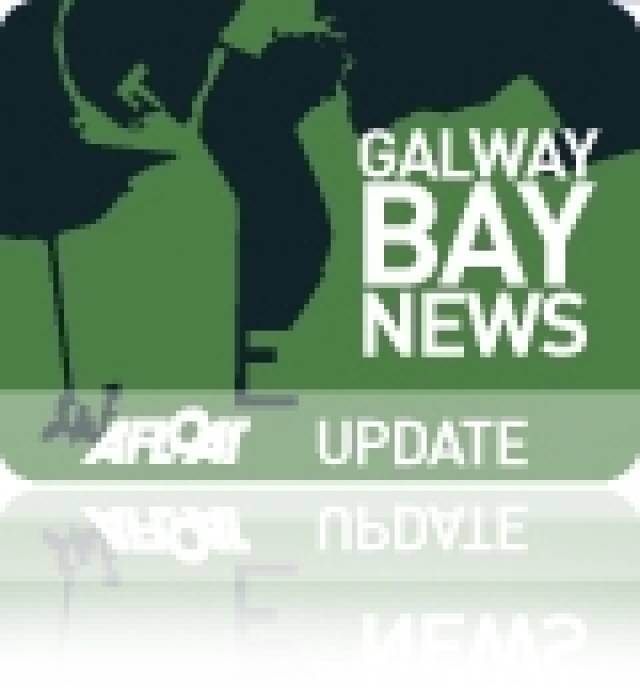#VESSEL VOLVO VILLAGE – As previously reported the ocean going heavy-lift container cargoship Deo Volente (2007/2,999grt) which is carrying the spectacular Volvo Ocean Race 'pop-up' spectator village from Lisbon is en-route off the Clare coast and is due to dock in Galway Docks this afternoon, writes Jehan Ashmore.
The high-tech village which is assembled from 70 crates and is one of two such villages which have accompanied the race across the globe is in the holds of the 105m long Dutch owned vessel. When Deo Volente enters through the dock she is to berth at Dún Aengus Dock North.
According to Capt. Brian Sheridan, Harbourmaster of the Galway Harbour Company, the containership is the first the port has ever had to handle and the unloading is part of "the unfolding jigsaw that is the Volvo Ocean Race".
The unloading process will create huge excitement as the village emerges from its containers and transforms the dockside into a gigantic sports and entertainment arena.
Deo Volente is operated by Hartman Seatrade, which they classify as a mini heavy-lift vessel. She is capable of carrying vessels as deck-cargo, unusual sized cargo as well as 236 TEU containers. On board are two 120 mt (metric tonnes) cranes, built by Liebherr which are mounted on the starboard side. Using both cranes the loading gear can handle a maximum tandem total weight of 240 mt.
The appearance of such a vessel will no doubt bring back memories to many Galwegians when in 2011 there was the saga of attempting to load two former Aran Islands fast-ferry sisters bound for new owners in Mauritius.
Albeit on this occasion of the impending Volvo Ocean Race, the process of unloading the pop-up village is far more conventional in the form of containers, though what is required is the 60 specialist construction workers involved in the task of assembling the village. The vessel is to stay in port overnight and scheduled to depart tomorrow afternoon.
As for last year's protracted loading of the fast-ferries, it was heavy-lift ship Thor Gitta (4,078grt) that stepped in after another similar vessel, Pantanal (7,837grt) ran aground in Rossaveal on 31 March. It was from the joint fishing and ferry port, where the ferries were originally due to be loaded.
Instead the ferries had to transfer to Galway Harbour where the vessel eventually departed nearly a month later on the 8,300 mile delivery voyage to the Indian Ocean.































































